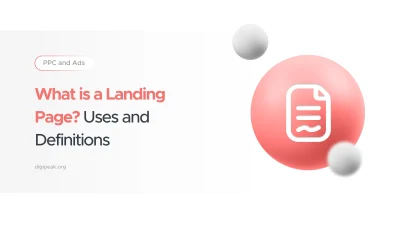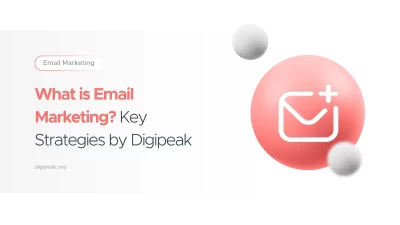
What is a Landing Page? Uses and Definitions
Landing Pages are the web pages that visitors are directed to after clicking on advertisements. …
21/07/2023 -
9 dk okuma
Stay up to date with Peakers
Today, with the rapid development of the digital world and the advancement of technology, the e-commerce sector is undergoing a major transformation. People’s shopping habits, preferences and expectations are changing, forcing e-commerce businesses to develop new strategies and adapt to trends. Digital marketing trends in e-commerce are an important element that guides businesses through this transformation process and ensures their success.
In this blog post, we will focus on digital marketing trends in e-commerce, exploring why businesses should adapt to these trends and how they can offer opportunities. In the following subtopics, we will take a closer look at key trends such as the widespread use of voice search and smart speakers, mobile-focused marketing strategies, AI-powered customer experience, the power of social media ads, the importance of content marketing in E-commerce and the role of innovation and personalization.
Let’s explore these trends together!
Today, smart speakers and voice assistants are gaining popularity. This trend allows users to easily search for products and services. E-commerce businesses are taking advantage of this growth opportunity by making their websites and content compatible with voice search optimization. In fact, not only e-commerce companies, but now most products and services have started to actively use these plugins on their sites.

With the rapid increase in smartphone usage, mobile-oriented marketing strategies have gained vital importance. E-commerce companies can increase user experience and have a positive impact on sales by offering mobile-focused solutions such as mobile apps, responsive websites, and fast mobile payment options. You can communicate with your target audience in the right place and at the right time by customizing many different things, such as location, device, etc., in both organic and paid channels.
Artificial intelligence plays an important role in e-commerce to enhance the customer experience. AI-powered E-commerce solutions such as chatbots, personalized product recommendations, and tailored marketing communications can enrich the shopping experience of customers and influence their purchasing decisions. You can enhance the experience by using such channels in your products. With the right chatbot strategies, you can increase customer loyalty while maximizing your business efficiency and brand awareness.
Social media platforms have become an important channel for e-commerce businesses to reach their target audience. Platforms such as Instagram and Facebook attract attention with their targeted advertising options and impressive visual features. E-commerce companies can increase brand awareness and sales by strategically using social media ads.
Today, large e-commerce companies are actively using social media for PR activities in a very active and strategic way. As a Digipeak team, we closely follow these trends and experience them by applying them to our partners.
Quality and engaging content are essential parts of a successful e-commerce marketing strategy. Various types of content, such as blog posts, product reviews, e-books, videos, and infographics, can increase brand authority, drive organic traffic, and ensure customer loyalty.
It is very important to use these channels actively. As you know, video content, which is a rising trend, is now very important and indispensable. Video works that are creative, compatible with the brand and take into account generational differences are making a lot of noise today.
With the increase in competition in e-commerce, innovation and personalization have come to the forefront. E-commerce businesses should offer unique experiences to customers by following new technologies, and we can offer personalized products and services for their needs. This is a must-have way to build brand loyalty and a strong bond with customers.
Many e-commerce companies are now offering personalized experiences both in their customer relationships and on their sites and applications. We are keeping up with this trend with our partners and team.
Google Ads for e-commerce businesses are a powerful tool to reach potential customers, increase brand awareness, and boost sales. Google Ads allows you to display your ads on search results pages and target them with audience-specific keywords. The following issues are very important in detailed studies.
Keyword Research and Targeting:

Facebook offers a powerful advertising platform for e-commerce businesses. By providing access to a large user base, Facebook ads offer the potential to increase brand awareness, reach target audiences, and increase sales. Here are some important strategies for using Facebook ads effectively in e-commerce:
Using Facebook ads effectively in e-commerce offers the potential to grow your brand, influence your target audience, and increase sales.
What’s missing: While social media ads are mentioned, live shopping experiences on platforms like Instagram Live, TikTok Live, and YouTube are booming in 2025—especially in the fashion, cosmetics, and electronics sectors.
Add: “Brands are increasingly using live video to launch products, answer questions in real time, and drive direct purchases, replicating in-store experiences digitally.”
What’s missing: You mention personalization, but not across channels. Today’s e-commerce personalization isn’t just about email or product recs—it’s about offering a unified experience across web, mobile apps, marketplaces, WhatsApp, SMS, and in-store if applicable.
Add: “2025 e-commerce leaders unify personalization across all customer touchpoints—from Instagram DMs to email flows and even WhatsApp broadcasts.”
What’s missing: AI is mentioned, but not the boom of generative AI tools like ChatGPT, Midjourney, and Sora for content creation, product descriptions, ad visuals, and customer service automation.
Add: “Brands are now automating blog content, email campaigns, and even creating AI-generated product visuals—reducing production time and costs while scaling creativity.”
What’s missing: Not much on privacy changes (cookie death), and the rise of first-party data-driven prediction. Tools like GA4, Shopify CDP, and Klaviyo are enabling brands to forecast buying intent and customize experiences in real time.
Add: “In a cookieless world, smart e-commerce brands are investing in collecting zero and first-party data to power predictive segmentation and tailored experiences.”
What’s missing: No mention of eco-conscious trends, which are now top decision drivers. Brands are required to show their sustainability values.
Add: “More customers in 2025 prioritize ethical and sustainable brands. E-commerce sites are adapting with carbon-neutral shipping options, recyclable packaging, and visible CSR policies.”
What’s missing: Try-before-you-buy AR experiences, 3D virtual store tours, or metaverse-lite experiences on platforms like Snapchat AR or Shopify AR.
Add: “Augmented reality (AR) lets customers try on glasses, furniture, or clothes from home, boosting confidence and reducing returns.”
What’s missing: You mention digital strategies, but logistics innovation is a huge conversion factor. Same-day delivery, local fulfillment centers, and real-time delivery tracking are vital for 2025’s customer expectations.
Add: “E-commerce success also depends on smart logistics. Brands investing in same-day or flexible pickup options are seeing better retention and higher average order values.”
What’s missing: Not much mention of retention tools like loyalty points, referral rewards, spin-to-win popups, or gamified quizzes. These now work exceptionally well for DTC brands.
Add: “Creative loyalty programs that gamify the shopping journey help boost repeat purchases and reduce CAC in a competitive market.
What’s missing: While social media is mentioned, there’s little on automating social proof—tools like Loox, Yotpo, or Videowise automatically collect user-generated content and video reviews, which now strongly influence purchasing behavior.
Add: “Smart brands integrate customer photos, video testimonials, and influencer micro-reviews right into their PDPs to increase trust and reduce bounce rates.”
Digital marketing trends in e-commerce play a critical role in the success of businesses. The topics we cover in this blog post are very important and trending. As a Digipeak team, we closely follow these trends. Adapting to these trends enables e-commerce businesses to grow and stand out from the competition.
Following digital marketing trends in e-commerce and implementing these trends correctly is critical for a successful online business. If you want to make your digital growth more efficient and effective, we would be happy to support you as part of the Digipeak team. You can contact us today to do more beautiful work together!
Get an Offer


Join Us So You Don't
Miss Out on Digital Marketing News!
Join the Digipeak Newsletter.
Related Posts

Landing Pages are the web pages that visitors are directed to after clicking on advertisements. …

Let's learn how businesses use email not only to communicate with customers but also to …

As someone who's navigated the complex world of Amazon advertising, I understand how overwhelming it …

Digipeak is your ultimate partner in navigating the world of digital advertising. With a mission …